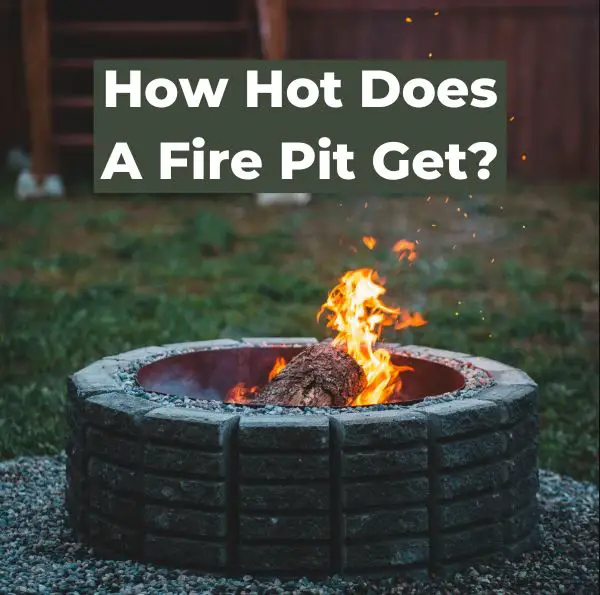Outdoor fire pits are a popular addition to many homes, providing warmth and ambiance for outdoor gatherings. But how hot does a fire pit get? Wood fire pits average 800 degrees Fahrenheit, while gas fire pits average 500 degrees Fahrenheit. This average fire pit temp depends on several factors including the type of fire pit and the fuel source used.
Gas fire pits, for example, typically burn at lower temperatures than wood-burning fire pits. On the other hand, wood-burning fire pits can reach extremely high temperatures. Propane fire pits fall somewhere in between.
The maximum temperature of a fire pit will depend on its design and fuel source, as well as the size of the fire and the amount of airflow.
How Hot Can A Fire Pit Get?
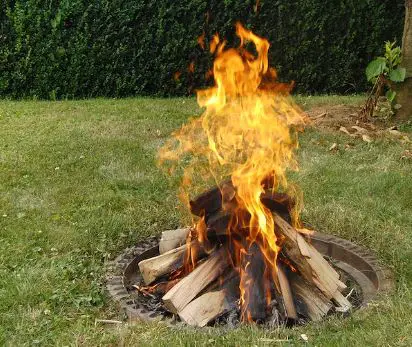
Fire pits average 800 degrees Fahrenheit, but can be anywhere from 500 to 1200 degrees.
A fire pit’s temperature depends on several factors, including the type of fuel used, the size of the fire, and the amount of oxygen available to burn.
Heat output is measured in British thermal units (BTUs), and fire pits can produce anywhere from 1,000 BTUs to 100,000 BTUs or more.
Factors That Affect Fire Pit Temperature
Type of Fuel
The type of fuel used in a fire pit has a significant impact on how hot it can get. Wood fire pits burn hotter than gas fire pits, with some reaching temperatures of over 100,000 BTUs.
Gas fire pits typically have a lower heat output of around 500 degrees Fahrenheit, with small-scale models producing up to 10,000 BTUs and commercial-sized models producing up to 70,000 BTUs.
Type of Wood
If using a wood fire pit, the temperature can depend on the type of wood used.
Hardwoods like birch and alder burn hotter and longer than softwoods like bradford pear and cedar.
See Related: What Woods Are Toxic To Burn?
Natural Gas
When using a natural gas fire pit, the amount of gas flowing into the burner affects the heat output.
The higher the gas flow, the hotter the fire pit will burn.
Oxygen to Burn
The amount of oxygen available to fuel the fire also affects the temperature a fire pit can reach.
A well-ventilated fire pit will burn hotter than one with limited airflow.
Radiant Heat
Fire pits not only produce heat through the flames but also through radiant heat.
Radiant heat is the heat that is transferred from the fire pit to surrounding objects, such as people and furniture.
The amount of radiant heat produced depends on the size of the fire and the amount of heat generated.
Size of the Fire
The size of the fire in a fire pit also affects the temperature it can reach.
A larger fire will burn hotter than a smaller one, as there is more fuel available to burn.
In conclusion, the temperature a fire pit can reach depends on several factors, including the type of fuel used, the type of wood (if using a wood fire pit), the amount of gas flowing into the burner (if using a gas fire pit), the amount of oxygen available to fuel the fire, the amount of radiant heat produced, and the size of the fire.
Types Of Fire Pits
When it comes to fire pits, there are several different types available on the market. Each type has its own advantages and disadvantages, and it’s important to choose the right one for your needs. Here are the three most common types of fire pits:
Wood Burning Fire Pits
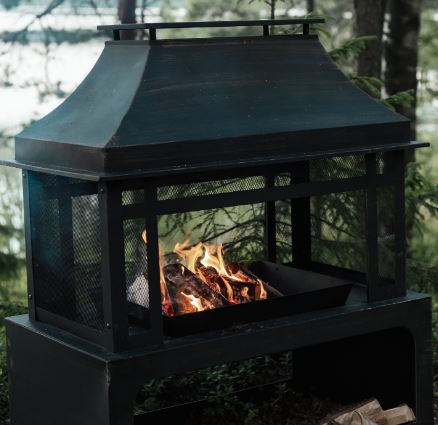
Wood burning fire pits are the most traditional type of fire pit. They are fueled by wood and produce a lot of heat and smoke.
These types of fire pits are perfect for those who want the authentic campfire experience. They are also the most environmentally friendly option, as they do not produce any harmful emissions.
However, wood burning fire pits require a lot of maintenance. You need to constantly add wood to keep the fire going, and clean up the ashes afterwards.
They can also be dangerous if not used properly, as sparks can fly out and start a fire.
See Related: How to Keep a Fire Pit Going and How Long Does Wood Take To Dry After It Rains?
Gas Fire Pits
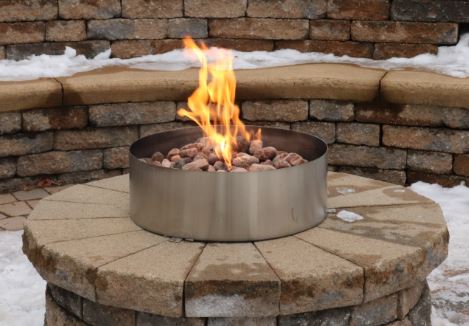
Gas fire pits are a more modern option. They are fueled by natural gas or propane and are much easier to use than wood burning fire pits.
They produce less heat and smoke than wood burning fire pits, making them a good option for those who want to enjoy a fire without the hassle.
Gas fire pits are also safer than wood burning fire pits, as they do not produce sparks or embers.
Gas fire pits are more expensive to operate than wood burning fire pits, as you need to buy gas to fuel them.
They’re also less environmentally friendly, as they produce harmful emissions.
Propane Fire Pits
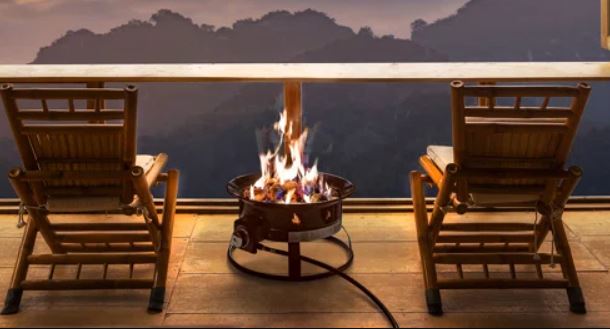
Propane fire pits are similar to gas fire pits, but they are fueled by propane instead of natural gas.
They are also easier to use than wood burning fire pits and produce less heat and smoke.
Propane fire pits are a good option for those who want a portable fire pit, as they can be easily moved around.
Propane fire pits are also safer than wood burning fire pits, as they do not produce sparks or embers.
Propane pits are more expensive to operate than wood burning fire pits, as you need to buy propane to fuel them.
See Related: Can Propane Freeze? And Bad Propane Regulator Symptoms
In summary, each type of fire pit has its own advantages and disadvantages.
It’s important to choose the right one for your needs and take proper safety precautions when using it.
Maximum Heat Output
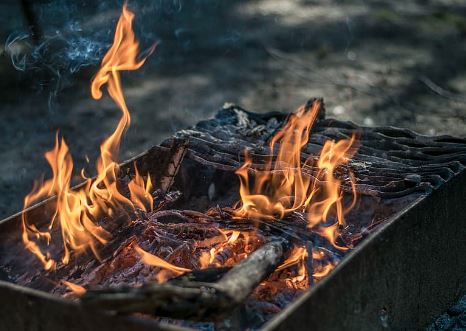
How Much Heat Can A Fire Pit Generate?
The maximum heat output of a fire pit depends on various factors such as the type of fuel, the amount of oxygen to burn, the size of the fire, and the heat generated.
Wood fire pits can generate over 100,000 BTUs (British Thermal Units), while gas fire pits can generate up to 70,000 BTUs.
The heat generated by wood burning can reach over 1000 degrees Fahrenheit, while gas fire pits can reach up to 400 degrees Fahrenheit.
The amount of heat generated by a fire pit is influenced by the type of wood used.
Hardwoods such as oak and hickory produce more heat than softwoods such as pine and cedar. The size of the fire bowl also affects the heat output.
The bigger the fire bowl, the bigger the flames, and the higher the heat.
Table Of Heat Output For Different Fire Pits
Below is a table of the heat output for different fire pits:
| Type of Fire Pit | Average Temperature | Heat Output (BTUs) |
| Wood Fire Pit | 800 F | Over 100,000 |
| Gas Fire Pit (Small-Scale) | 500 F | Up to 10,000 |
| Commercial-Sized Gas Fire Pit | 1,000 F | Up to 70,000 |
It is important to note that the heat output of a fire pit can be dangerous if not used properly.
Fire pits should always be used in a safe and controlled manner to prevent any accidents or injuries.
The radiant heat from a fire pit can cause plastics to soften at 176°F and melt between 250° and 350°F, so it is important to keep a safe distance from the fire pit.
Safety Considerations
When using a fire pit, safety should be the top priority.
Fire pits can get very hot and cause injuries or property damage if not used properly.
Below are some important safety considerations to keep in mind when operating a fire pit.
How To Safely Operate A Fire Pit
- Choose a safe location: The fire pit should be placed in a safe location that is at least 10 feet away from any structures, including your house, shed, fence, and neighboring yards. If possible, choose an open area with no overhanging branches or flammable materials nearby.
- Use the right fuel: Only use the appropriate fuel for your fire pit, whether it is wood, propane, or natural gas. Do not use gasoline, kerosene, or other flammable liquids to start or enhance a fire.
- Follow manufacturer instructions: Always follow the manufacturer’s instructions for your specific fire pit model. This includes assembly, operation, and maintenance.
- Supervise the fire: Never leave a fire pit unattended, especially when children or pets are around. Keep a close eye on the fire and make sure it is fully extinguished before leaving.
Precautions To Take When Using A Fire Pit
- Protect the area around the fire pit: Clear the area around the fire pit of any flammable materials, such as leaves, twigs, or paper. Use a non-flammable mat or pad under the fire pit to protect the ground or deck.
- Keep a fire extinguisher nearby: Have a fire extinguisher nearby and know how to use it in case of an emergency. A bucket of sand or water can also be used to put out a fire.
- Be mindful of wind: Wind can cause sparks or embers to fly out of the fire pit and start a fire. Avoid using the fire pit on windy days or use a fire screen to prevent sparks from escaping.
- Wait for the fire to cool down: Do not attempt to move or touch the fire pit until it has fully cooled down. The metal can remain hot for several hours after the fire has been extinguished.
By following these safety considerations, you can enjoy your outdoor fire pit without putting yourself or others in danger.

